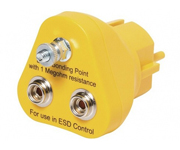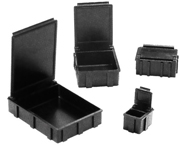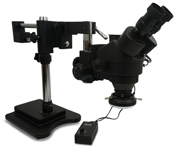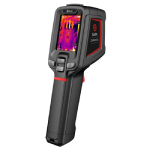RoHS stands for Restriction of Hazardous Substances and influences the entire electronics industry worldwide. This article is about the consequences of this legislation that has been active on the European market since 2006.
Content
| Harmful substance | Maximum concentration |
| Lead (Pb) | < 1000 ppm |
| Mercury (Hg) | < 100 ppm |
| Cadmium (Cd) | < 100 ppm |
| Hexavalent Chromium (Cr VI) | < 1000 ppm |
| Polybrominated Biphenyls (PBB) | < 1000 ppm |
| Polybrominated Diphenyl Ethers (PBDE) | < 1000 ppm |
| Bis(2-Ethylhexyl) phthalate (DEHP) | < 1000 ppm |
| Benzyl butyl phthalate (BBP) | < 1000 ppm |
| Dibutyl phthalate (DBP) | < 1000 ppm |
| Diisobutyl phthalate (DIBP) | < 1000 ppm |
History
ROHS dates from 2002, when it was decided in the EU with Directive 2002/95/EC that a total of 6 harmful substances had to be removed from the products on the market. The products in question are all electronic components, parts and complete products. The main purpose of this Directive was to ensure that substances were kept out of the process during the production and disposal of equipment. The directive became active in 2006.
Why a Directive on these substances?
Legislation has a purpose, as it is laid down by law that certain things may or may not be done. The reason for this legislation is that, since the beginning of the 20th century, there has been a huge increase in products with electronic components. In these products, substances have been used in large quantities, from which the harmful effects had not yet been sufficiently investigated. As a result, it later became apparent that some substances were harmful and should not be used. This includes various substances that were often used in the production of lamps, refrigerators and other products, for example. One of the substances included in the ROHS decree was lead. Lead can dissolve in water when it is discarded and will eventually end up in the groundwater. For this reason, but also for other health reasons, this product was banned from sold electronics.
RoHS 2

With RoHS 2, this directive became mandatory for a CE mark. This meant that the RoHS quality mark no longer had to be affixed to products that had a CE mark. Suddenly there were also other products that had to comply with the requirement, including for example cables and other accessories from then on. RoHS 2 started in 2013.
Lead-free
Due to the RoHS regulation, all electronics had to be produced with lead-free solder. This was suddenly a turning point in the world of electronics. All manufacturers had to adapt their production to comply with this requirement, or were punished with 'non compliance'. This could have several consequences, such as a ban on trade, but the ordinance does not provide guidance to consumers who want to hobby themselves. For this reason, it is still permitted to use lead-containing tin in your own projects and in all equipment that is not intended for sale. This is also frequently used.
The differences between lead-containing and lead-free

Lead-containing soldering tin has always been an easier tin to use. It has a few advantages over lead-free, but also a number of disadvantages. One of the advantages is that it has a lower melting temperature, which means that the soldering iron needs less power to melt it. For this reason, we always recommend the use of an active point soldering station for lead-free soldering tin. It works fine without it, but it works a lot easier with lead-free solder.
Besides this difference, it also looks different when it is well soldered. Lead-containing tin shines when it is solid, lead-free is dull, it is relatively easy to recognize from this.
Lead-containing and lead-free tin mix rather poorly, which is why it is good to keep in mind that the same type of tin is used in product repairs.
Other differences are described in the article about smoke extraction in our knowledge center.
Conclusion
For the environment, these regulations in the form of RoHS and RoHS 2 are a good development. There are less heavy metals in products that can cause damage to groundwater and other environments. Nothing changes for the consumer, except that less harmful substances may be used in the production of the electronics they use.















